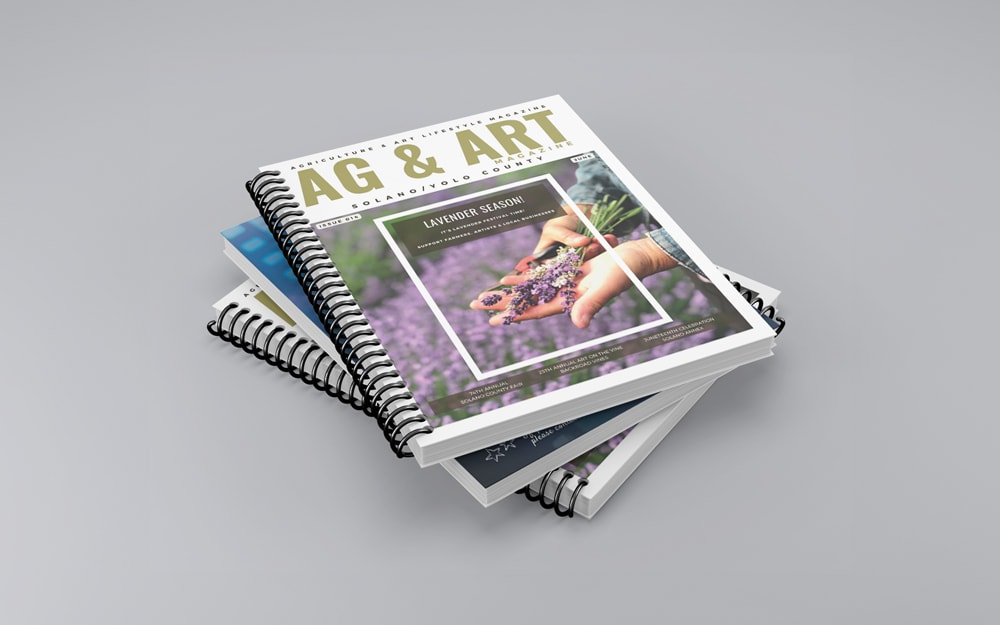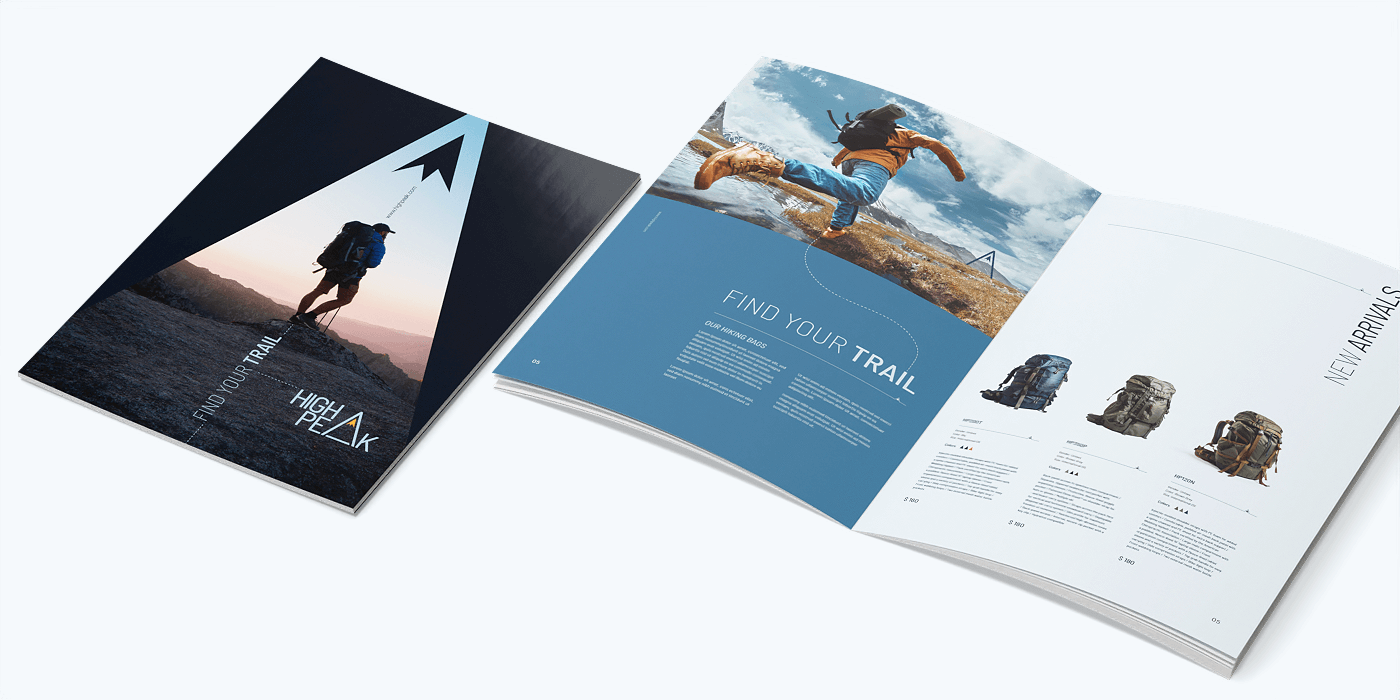How to Combine Print and Digital for Next-Level Booklet Printing
How to Combine Print and Digital for Next-Level Booklet Printing
Blog Article
The Crucial Overview to Recognizing Brochure Printing Options and Techniques
The procedure of pamphlet printing entails several considerations that can considerably affect the final product. From selecting the ideal layout and dimension to recognizing the subtleties of binding methods, each choice plays a vital role. Additionally, variables such as paper supply and printing techniques further affect the efficiency of the booklet. As one browses these choices, it comes to be vital to understand just how they adjoin and what that implies for the overall outcome.
Recognizing Brochure Formats and Sizes
When thinking about pamphlet printing, understanding the different styles and dimensions readily available is essential for attaining the preferred presentation. Brochures can be created in countless styles, consisting of saddle-stitched, spiral-bound, and perfect-bound, each offering unique advantages. Usual dimensions range from standard letter (8.5 x 11 inches) to smaller sized options like A5 (5.8 x 8.3 inches), enabling flexibility based on material and target audience.Selecting the proper size can influence both the design and viewers engagement. Bigger dimensions may suit visually driven web content, while smaller styles might be extra straightforward and portable. Additionally, the variety of web pages affects the choice of binding approach, as thicker brochures may need tougher bindings. Inevitably, recognizing these facets permits an extra tailored approach, making certain that the end product lines up with the designated message and visual, improving the overall efficiency of the communication.
Selecting the Right Paper Stock

Binding Techniques: Factors To Consider and choices
When it comes to binding methods for brochures, numerous options are offered, each with distinct benefits. Saddle stitch binding offers a cost-efficient solution for thinner booklets, while ideal binding techniques provide a more sleek appearance for thicker publications. Wire-O binding stands apart for its sturdiness and ease of usage, making it excellent for records that need flexibility.
Saddle Stitch Binding
Saddle stitch binding uses a sensible and cost-efficient remedy for constructing brochures, making it a preferred selection amongst authors and organizations. This binding approach entails folding sheets of paper in fifty percent and stapling them along the fold line, producing a organized and neat appearance. Generally suitable for booklets with a lower page count, saddle stitching is ideal for magazines, sales brochures, and instructional materials. The simplicity of this technique permits fast manufacturing and is frequently favored for promotional items or short runs. It is vital to keep in mind that saddle stitch binding may not be suitable for thicker pamphlets, as the spinal column may not hold up under raised weight. On the whole, it stays a trustworthy option for many printing tasks.
Perfect Binding Strategies
Perfect binding is an extensively utilized strategy that supplies a specialist and refined surface to pamphlets and magazines. This method involves gluing the web pages with each other at the back making use of a strong adhesive, allowing for a clean edge and the capability to hold a larger number of web pages compared to saddle sewing. Perfect binding is particularly ideal for thicker booklets, such as directories and annual reports, where a tough, flat back is desired. Furthermore, it offers the alternative for a printed cover that can be made to enhance aesthetic allure. Nevertheless, factors to consider such as web page matter, paper weight, and the intended use of the brochure should be considered, as they can influence sturdiness and total quality.
Wire-O Binding Alternatives
Wire-O binding, known for its sturdiness and versatility, supplies an excellent choice for booklets that require simple web page turning and a professional appearance. This binding method uses a collection of metal loops that hold web pages firmly, permitting them to exist level when open. It is particularly ideal for brochures, handbooks, and discussions as a result of its durable nature. Wire-O binding is readily available in different colors and diameters, suiting different page matters and thicknesses. Additionally, it allows the inclusion of tabs and covers, enhancing the pamphlet's overall aesthetic. Considerations for Wire-O binding consist of the option of cable shade, the size of the loopholes, and the level of personalization wanted, all of which can profoundly affect the last product's look and performance.
Digital vs. Offset Printing: Which Is Best for You?
When selecting a printing approach for brochures, comprehending the try here differences in between electronic and offset printing is important. Digital printing utilizes modern-day technology to generate top notch prints swiftly and affordably, making it ideal for brief runs or projects calling for fast turnaround times. It permits for personalization, providing the capability to print on-demand with marginal waste.In comparison, counter printing is a conventional method that masters producing huge quantities with regular quality. It entails transferring ink from a plate to a rubber blanket, after that to the paper, which leads to exact information and vivid colors. Nonetheless, offset printing typically requires longer arrangement times and is much more cost-efficient for bigger volumes.Ultimately, the selection in between digital and balance out printing depends on project requirements, spending plan, and wanted quantity. For small, time-sensitive projects, digital may be the most effective choice, while offset might be better for right here bigger, top quality productions.

Creating Your Pamphlet: Tips and Ideal Practices
When making a pamphlet, careful focus to format, typeface choice, and color usage can greatly boost its efficiency. A well-structured design guides the reader's eye, while proper font styles ensure readability and communicate the desired tone. Additionally, reliable usage of shade can stimulate feelings and highlight essential information, making the total design much more impactful.
Choosing the Right Format
Exactly how can one effectively pick the best design for a pamphlet? It is necessary to evaluate the pamphlet's function and target audience. A tidy, organized layout improves readability and engagement. Using a grid system can aid in aligning aspects constantly, producing a professional appearance. Furthermore, integrating visual pecking order with varying dimensions and positionings of images and message can guide the visitor's eye and emphasize vital information. It is additionally important to leave enough white space, which protects against overcrowding and enables better emphasis. Ultimately, evaluating various formats with mock-ups can give insight right into just how the design does in real-world situations, guaranteeing that the last item meets both visual and useful demands.
Choosing Appropriate Fonts
A well-chosen font style can considerably boost the general layout of a booklet, complementing the layout and strengthening the material's message. The choice of fonts ought to take into consideration readability, particularly for body text, as it assures the information is available to all visitors. Sans-serif fonts are frequently preferred for electronic styles, while serif fonts can provide a standard feel in published materials. It's a good idea to limit font options to 2 or three to keep visual coherence. Furthermore, font style size plays an essential role; headings should informative post be distinct however not frustrating, while body message must fit for reading. When choosing font styles, alignment with the booklet's motif and target market is vital for reliable communication and aesthetic allure.
Effective Use Color
Shade offers as an effective tool in booklet style, shaping assumptions and directing viewers emotions. It can stimulate feelings of peace, enjoyment, or trust, relying on the colors selected. Designers ought to take into consideration color theory concepts, guaranteeing that the selected combination straightens with the brochure's message and target audience. As an example, making use of warm shades like red and orange can develop urgency, while cooler tones like green and blue foster tranquility.Additionally, contrast plays an essential role; complementary colors can boost readability and visual appeal. Uniformity in color use across pages additionally reinforces brand name identification and communication. Ultimately, efficient color application not just captures attention but also strengthens the brochure's function, making it an essential aspect of successful design.
Finishing Touches: Coatings and Special Effects
While numerous consider the content and layout of a booklet one of the most critical elements, the finishing touches, such as coatings and unique results, play an essential role in enhancing its overall allure. Coatings can give defense and longevity, making certain that the pamphlet holds up against damage. Matte surfaces provide a sophisticated, non-reflective surface area, while glossy coatings can make shades show up more appealing and vibrant. Unique impacts, like embossing or aluminum foil stamping, add a tactile measurement that can produce a memorable impact. These strategies can highlight details locations, accentuating crucial information or developing aesthetic rate of interest. In addition, UV finish can offer a high-shine finish that raises the total look.Together, these completing touches not just boost the pamphlet's visual however likewise interact professionalism and trust and interest to detail, ultimately leaving a long-term effect on the reader.
Price Considerations for Pamphlet Printing
Understanding the numerous cost factors to consider for pamphlet printing is necessary for organizations and companies intending to optimize their budget plans. Trick elements affecting prices include the option of paper, binding, and ink techniques. Better materials, such as exceptional paper or specialized inks, generally boost the total expense. Furthermore, the dimension and web page count of the booklet play a considerable duty; bigger booklets need more sources and time to produce.Another vital factor to consider is the printing technique, whether digital or balanced out, as each has its very own rates framework and viability for various amounts. Services need to likewise consider design expenses, which can differ based on intricacy and using specialist services. Eventually, delivery and handling fees can contribute to the total, particularly for large orders. By assessing these components, organizations can make educated choices that align with their financial capacities while attaining the wanted top quality in their printed materials.
Frequently Asked Questions
What Are the Ecological Influences of Pamphlet Printing?
The ecological effects of brochure printing include deforestation from paper production, carbon exhausts from transport, and waste generation from discarded materials - Booklet Printing. Lasting techniques, such as using recycled paper and environment-friendly inks, can minimize these effects
How Can I Make Certain Color Accuracy in My Booklet?
To ensure color accuracy in a brochure, one should utilize adjusted screens, employ professional shade profiles, perform examination prints, and select top quality printing solutions that use color matching and proofing alternatives for ideal results.
What Is the Typical Turn-around Time for Brochure Printing?
The regular turn-around time for booklet printing differs depending upon the intricacy and quantity - Booklet Printing. Generally, it varies from a few days to two weeks, influenced by factors such as printing techniques and finishing demands
Are There Minimum Order Quantities for Brochure Printing?

Can I Print Brochures in Numerous Languages?
Printing booklets in several languages is feasible. Several printing services supply options for bilingual or multilingual designs, permitting for effective interaction. Careful planning guarantees that develop aspects suit numerous languages without compromising readability or looks. In addition, variables such as paper supply and printing techniques further influence the effectiveness of the booklet. When thinking about brochure printing, comprehending the different styles and sizes offered is necessary for attaining the preferred discussion. When selecting a printing technique for brochures, comprehending the differences between electronic and counter printing is vital. In addition, the size and page count of the brochure play a substantial duty; bigger pamphlets require more resources and time to produce.Another crucial factor to consider is the printing strategy, whether electronic or countered, as each has its own pricing framework and suitability for different amounts. The ecological effects of brochure printing include deforestation from paper manufacturing, carbon discharges from transportation, and waste generation from discarded products.
Report this page